Agronomic Insights
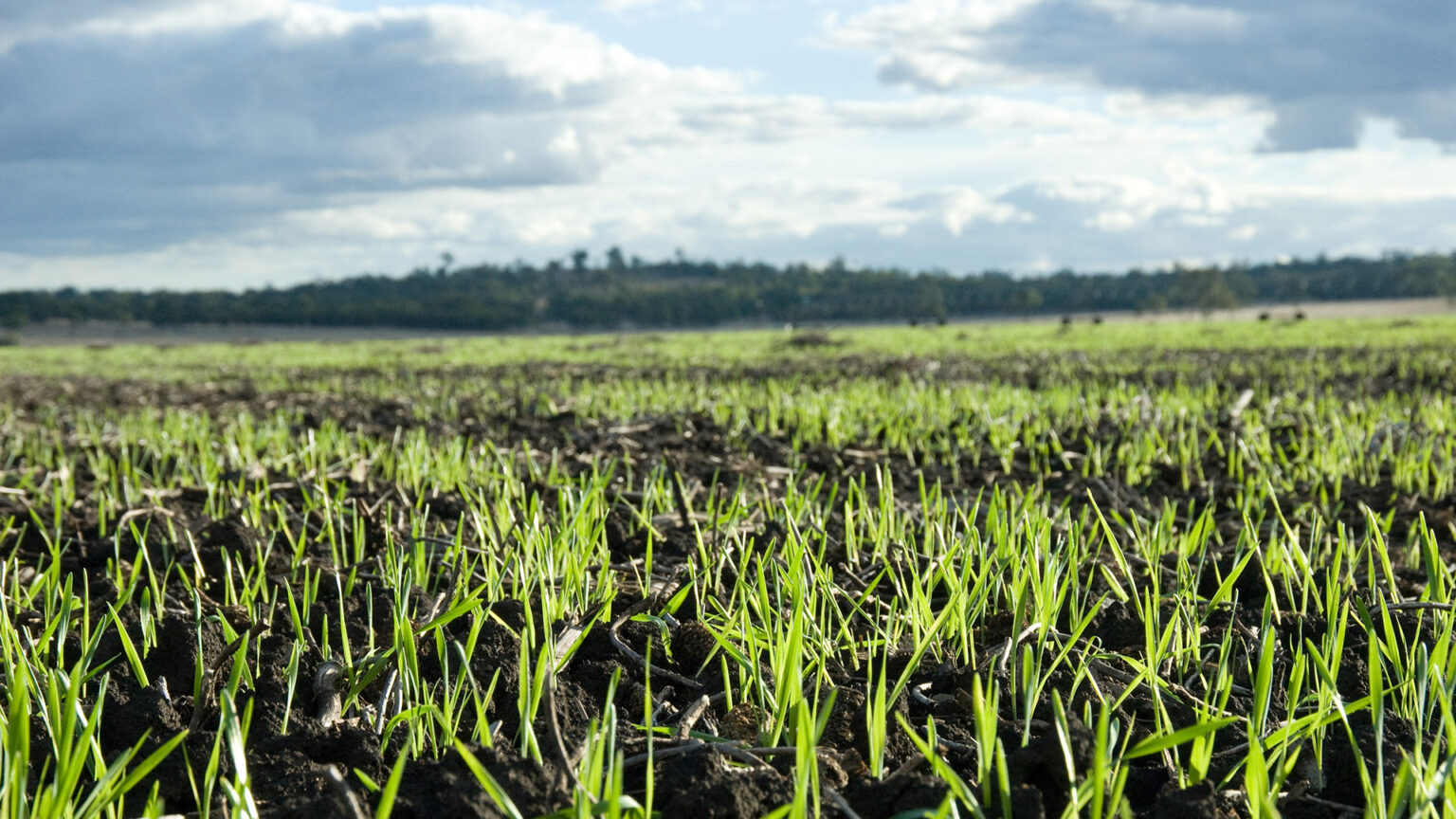
EASY N: Enhanced nitrogen means better productivity this season
10 April 2025
Author: David McRae – IPF Technical Agronomist
How to optimise nitrogen (N) is critical for growers and agronomists as N is generally the largest nutrient input for grain production. While urea can be the most cost-effective option on a price per kilogram basis, EASY N (Incitec Pivot Fertilisers liquid N fertiliser) can provide better N use efficiency through ease of application and lower volatilisation.
EASY N offers flexibility – it can be easily placed in the right position in the soil or applied evenly as an in-crop topdress. It also allows nutrient application timing to be optimised, improving fertiliser application effectiveness and logistical efficiencies. This means that N availability is matched to crop requirements reducing the potential for N losses and maximising the quantity of N available for plant uptake.
As a liquid fertiliser, it can be transferred and applied via pumps, hoses, tubing and nozzles/metering orifices. Application rates can be simply varied and controlled by rate controllers. The small sizing of the tubing or friction tubing used enables many planters / seeders to be setup to apply EASY N during pre-plant or planting operations. Most boom sprays can efficiently apply EASY N with either crop protectant nozzles or streambar / streaming nozzles.
EASY N is a true clear liquid that contains 42.5% w/v N as urea ammonium nitrate (UAN). It contains N in 3 forms; 25% ammonium, 25% nitrate and 50% urea.
EASY N can either be injected in the soil or used as a carrier for herbicide application.
The shift to low disturbance disc planters / seeders and fertiliser application equipment makes it more difficult to apply granular fertiliser through some seeders. The small hoses and friction tubing used for liquid setups enables effective delivery systems to be implemented.
EASY N offers flexibility and benefits for different application timings:
Pre-plant
To reduce the potential loss of pre-plant N through denitrification or leaching, eNpower (IPF’s patented nitrification inhibitor) can be added to EASY N. This will delay conversion of ammonium N to nitrate N, which is subject to loss.
Using EASY N as a carrier for herbicides allows two operations to be completed in one, fertilising and weed control. It is important to determine the tankmix compatibility before the intended use as some agricultural chemical product formulations may not disperse properly in low water conditions.
To minimise potential N loss via volatilisation of soil surface applied EASY N, rainfall events greater than 16-25mm (loam to clay soils), irrigation of cultivation is required in three days.
Planting and Seeding
EASY N can be applied at planting / seeding. If injected in the seed furrow, seed safety guidelines must be followed otherwise excessive rates of N can cause poor crop establishment. Safe rates of N can be found at Maximum rates of fertiliser applied with the seed in winter crops.
If non-seeding rows are available, then there is no restriction on the application rate of EASY N.
In-crop – Even N application
Applying N fertiliser evenly across N responsive fields produces the highest yields, the most consistent protein levels, and the greatest harvest efficiency. As growers adopt wider spreader widths and become more aware of N losses through volatilisation, there’s an increasing focus on timing fertiliser applications close to rainfall events to improve N uptake and maintain even distribution across the paddock.
Generally, wind speeds increase and become gusty in the days before rainfall. Spreading urea evenly in these conditions becomes increasingly difficult because the lower bulk density of urea granules is affected greater than other granular fertilisers. This results in striping where crops are N responsive.
Uneven application of N fertilisers will have a compounding affect with the move to permanent wheels tracks. Sections in the spread pattern that receive lower rates will progressively become more N responsive and sections that are over applied will produce rank and crops that may lodge in extreme situations.
An acceptable Coefficient of Variation (COV) for spreaders is 15% and boomsprays is 3%. If the spreader is performing well and targeting 100 kg/ha urea, this means that 68% of the field will receive a rate of between 85 to 115 kg/ha. The remaining 35% will either receive less than 85 kg/ha or more than 115 kg/ha.
The yield benefit or yield loss mitigation of applying EASY N evenly through a boomspray is often overlooked due to its higher price. Table 1 compares the yield difference required to achieve the same Net Income (gross income less N fertiliser cost). In the situation highlighted, a yield loss of 104 kg/ha would produce an equal outcome from both urea and EASY N.
In 2014, Fertilizer Australia estimated that the cost of unevenly spread N fertilisers in wheat crops typically ranged from $25-40/ha. Yield variations of 100 kg/ha are very difficult to access infield.
Table 1: Grain yield analysis focusing on net income for EASY N and urea.
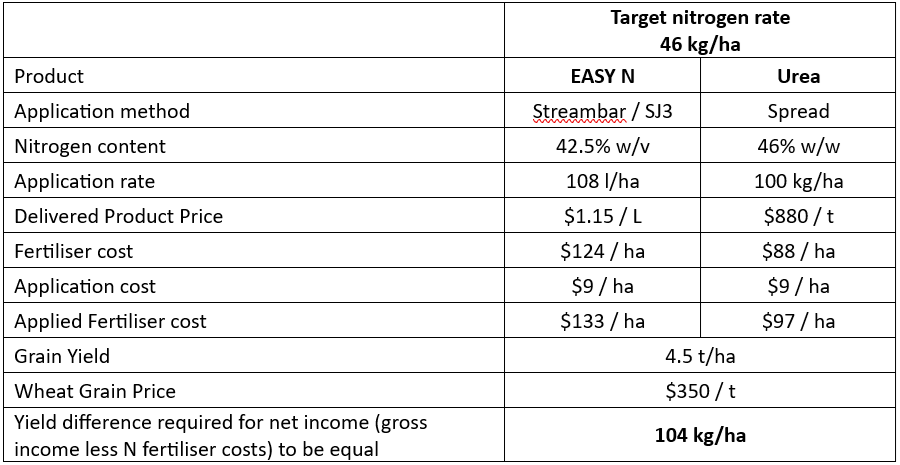
Source: Data from IPF Technical Agronomist David McRae (2025).
Reduced volatilisation
N losses due to volatilisation from EASY N (UAN) and urea have been studied. Turner et al (2012) found losses from EASY N were 57% less than urea for two wheat paddocks in the Horsham region. Research conducted by IPF last year across five sites from southern NSW to western Victoria revealed that relative losses from EASY N were on average 43% less than those from urea (Table 2) from an August application.
Table 2: Relative nitrogen losses measured as ammonia from urea or EASY N.

Source: Data from trials conducted by IPF technical agronomists Lee Menhenett and Fiona McDonald (2024).
Fertilising your crops with EASY N / EASY Liquids this season
Easy N is also now available with eNpower ammonium stabiliser or Trigger liquid humate premixed and ready to apply for ease of use.If you are considering incorporating EASY N / EASY Liquids into your fertiliser program this season, contact your local reseller for pricing and supply information.
For situations or crop programs that require more than N, IPF’s EASY Liquids range has products that can supply sulphur and zinc with N products. The full product range is available at EASY Liquids Product Guide.
Further information
For further information, please feel free to contact David McRae – david.mcrae@incitecpivot.com.au or 0477 987 321 and Lee Menhenett – lee.menhenett@incitecpivot.com.au or 0412 565 176.
More information about EASY N can be found on the IPF website and product brochure or from your local IPF Regional Business Manager or IPF Technical Agronomist (IPF Team).
If you require information on tank mixing EASY N / EASY Liquids, application rates, agricultural chemical compatibilities, or steambars you can contact the EASY Liquids Team:
- Bob Moorfield – 0488 067 736 (EASY Liquids Whitton),
- Matt Urquhart – 0429 789 298 (EASY Liquids Moree) or
- Conrad Leeks – 0466 664 026 (EASY Liquids Boundary Bend).
References
Turner DA, Edis RE, Chen D, Freney JR, Denmead OT (2012) Ammonia volatilization from nitrogen fertilizers applied to cereals in two cropping areas of southern Australia. Nutrient Cycling in Agroecosystems 93(2), 113-126.
DISCLAIMER
This is a guide only, which we hope you find useful as a general tool. While IPF has taken all reasonable care in the preparation of this guide, it should not be relied on as a substitute for tailored professional advice and IPF accepts no liability in connection with this guide. Incitec Pivot Fertilisers manufactures and sources fertilisers from other suppliers. The fertiliser supply chain extends beyond the company’s direct control, both overseas and within Australia. Incitec Pivot Fertilisers hereby expressly disclaims liability to any person, property or thing in respect of any of the consequences of anything done or omitted to be done by any person in reliance, whether wholly or in part, upon the whole or any part of the contents of this article.
You might also be interested in these
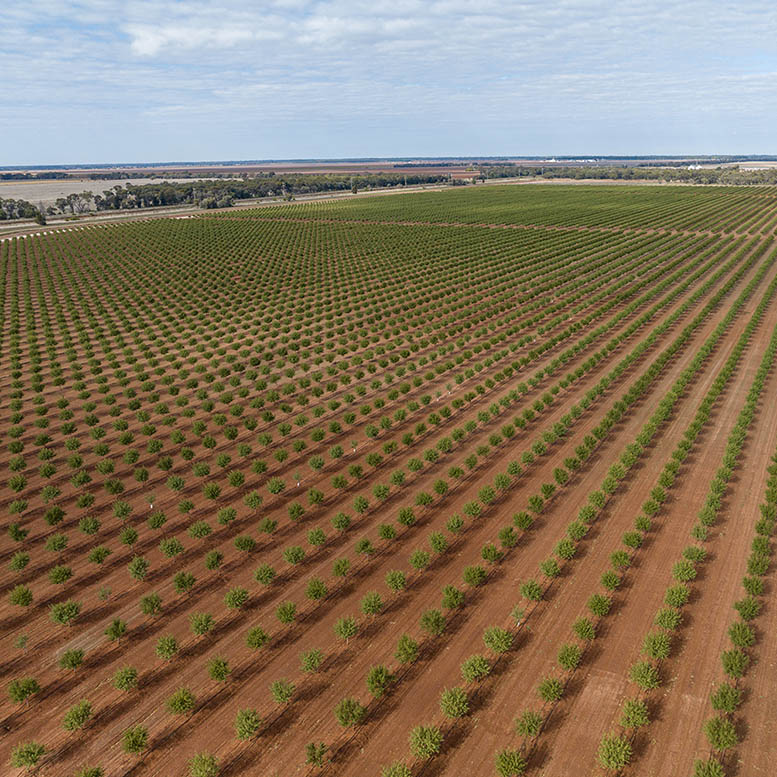
Horticulture, Pasture, Sugar, Summer Crop
Fertiliser use and GHG emissions being minimised on-farm
October / 2023
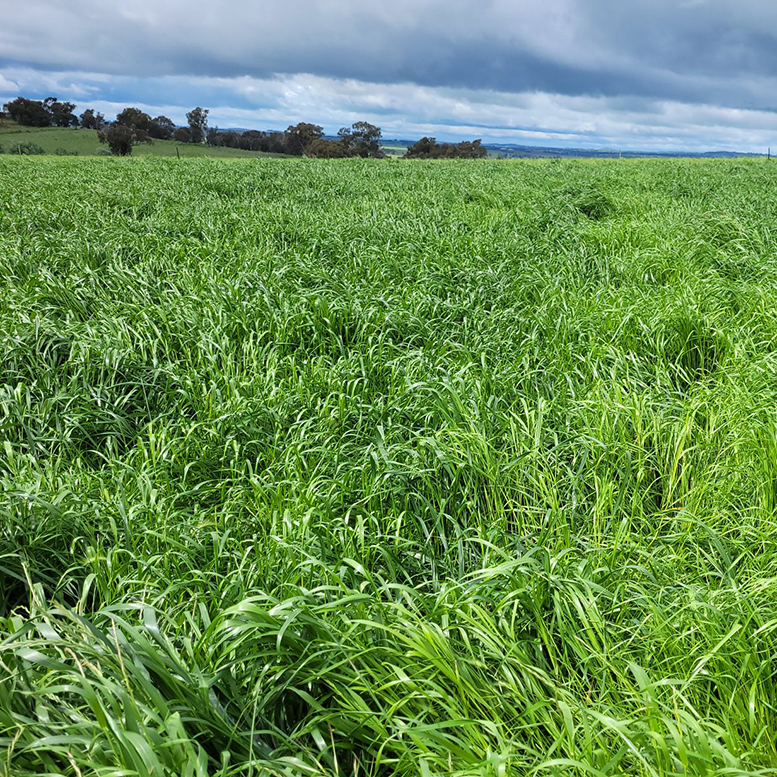
Pasture
The wonders of nitrogen use in pasture
July / 2024
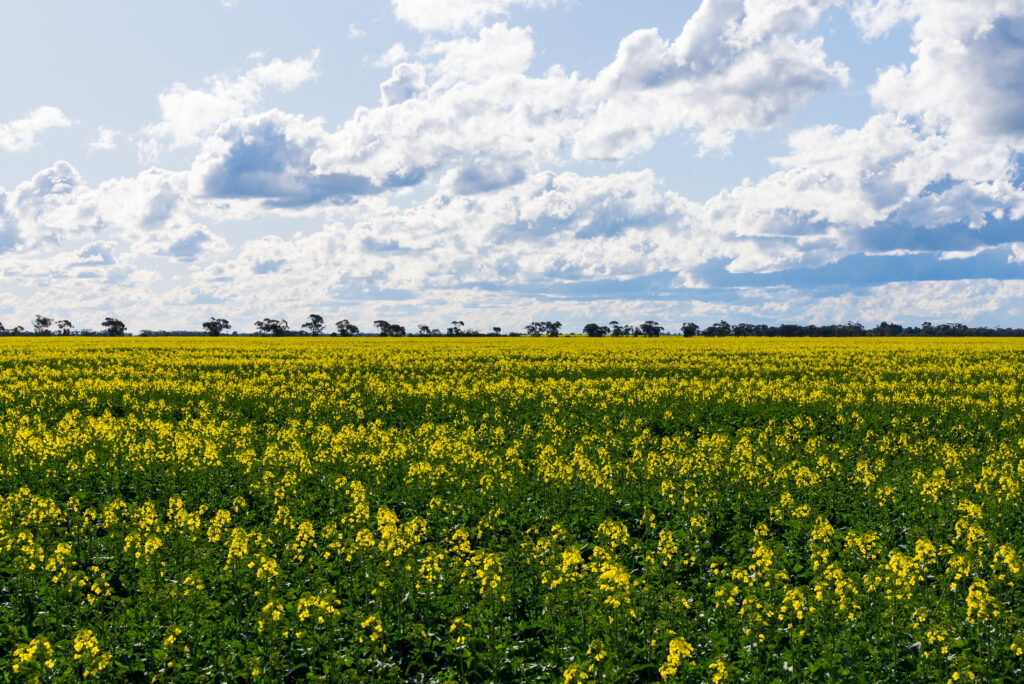
Winter Crop
Small but mighty Moly
June / 2023
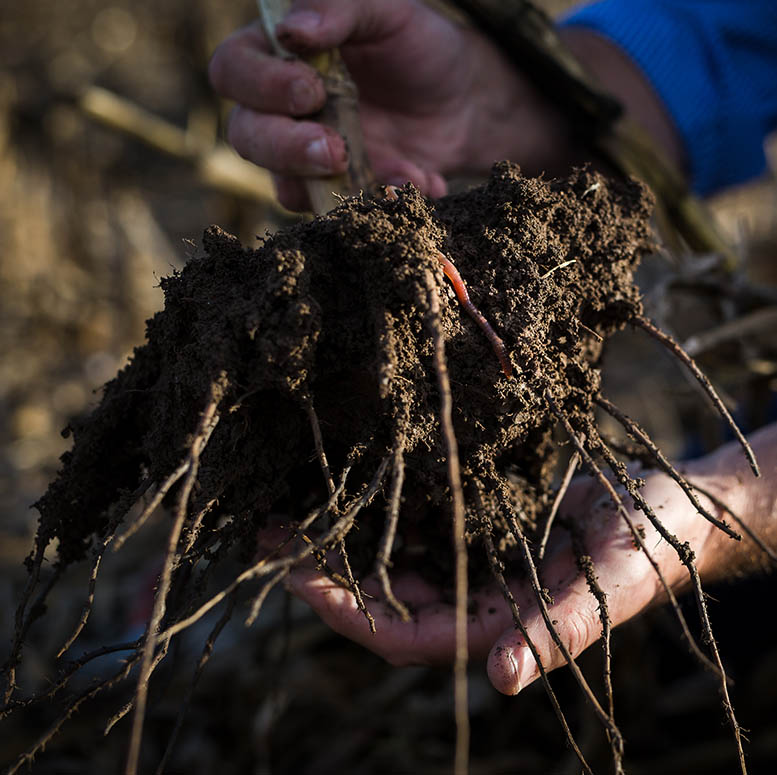
Horticulture, Pasture, Sugar, Summer Crop
Poor Soil Structure – Have you identified if it is costing you profitability?
November / 2023

